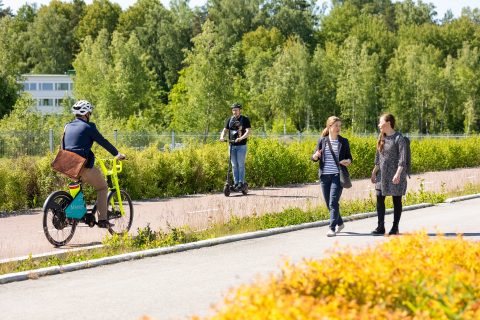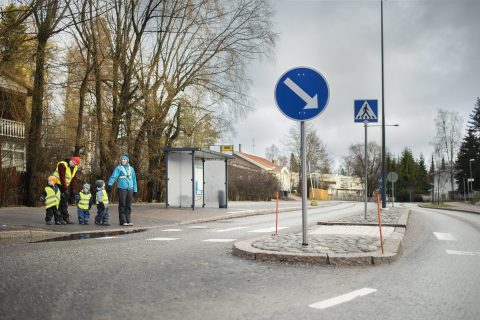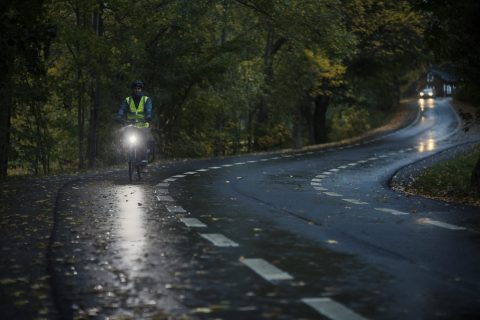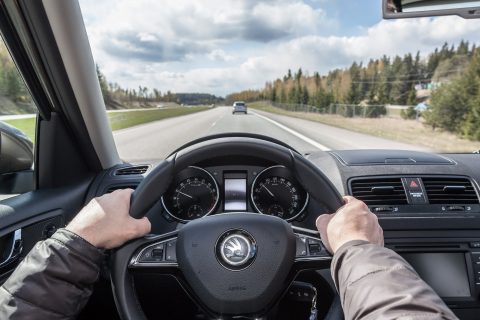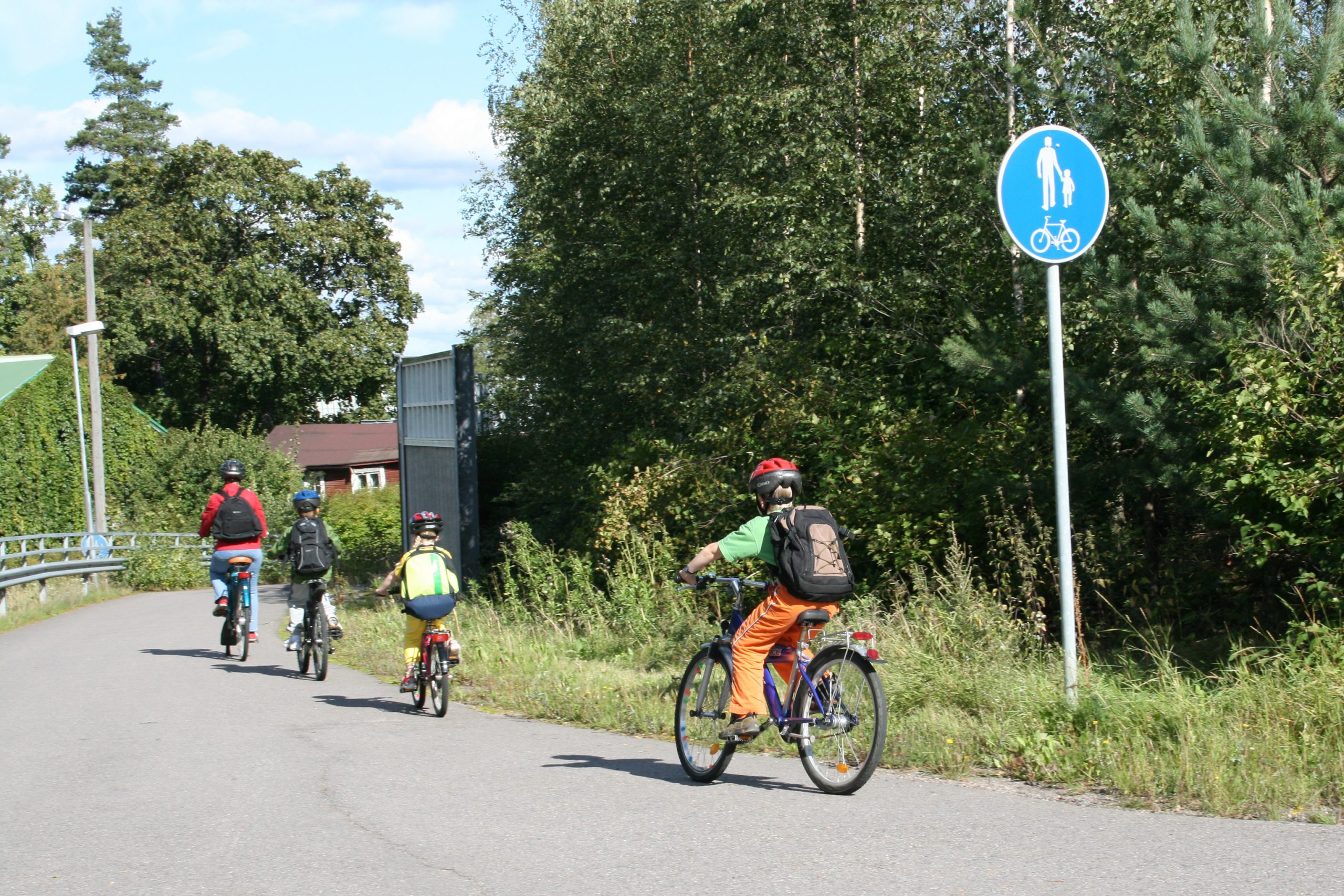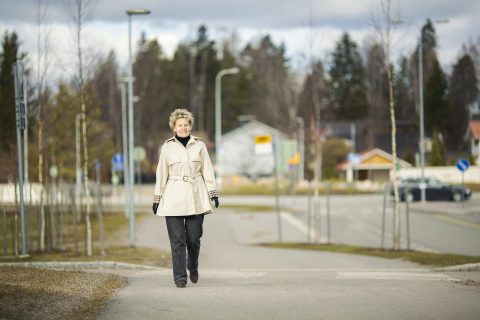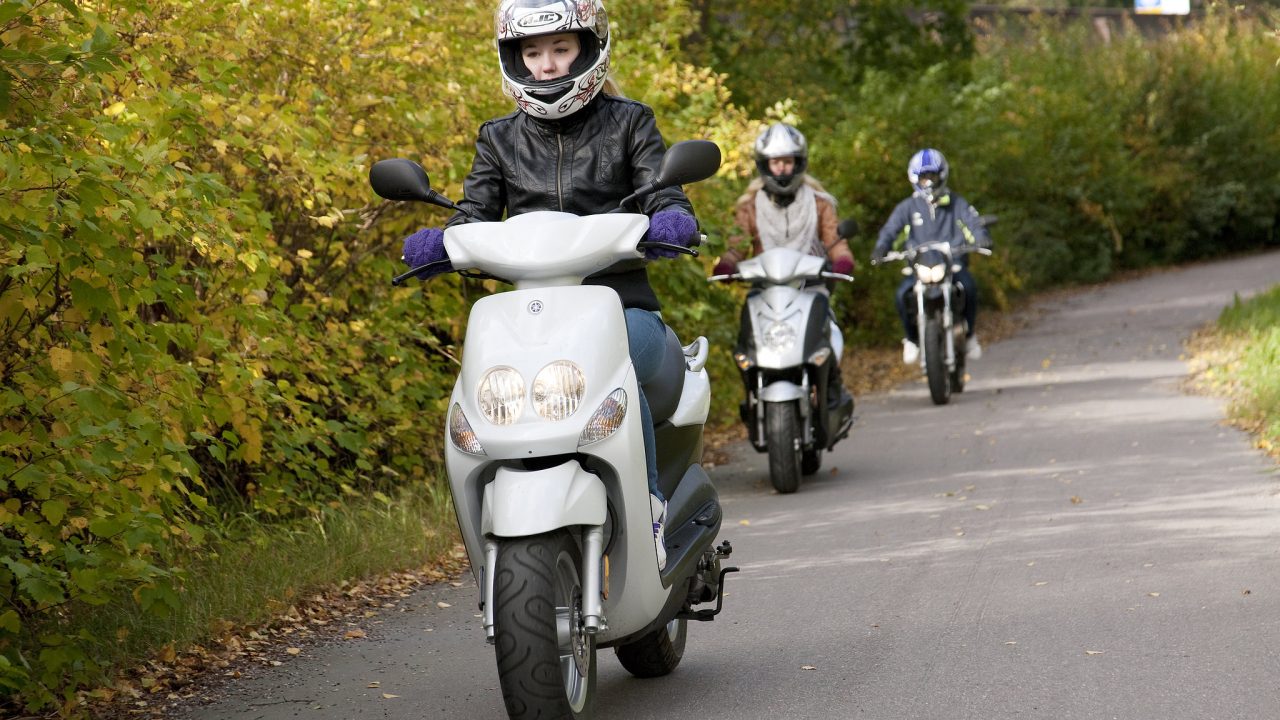
Upper secondary school student in traffic
When a young person starts upper secondary school, parents may be concerned about many things: smoking and other intoxicants, dating, using the Internet and school bullying. Similarly, road safety does not necessarily raise concerns, even though the young person is approaching the age where the risk of a traffic accident increases.
Young people are inexperienced in traffic
New upper secondary school students have already learned a lot, but they are still fairly inexperienced in traffic. The brain of people aged 13 to 18 has not yet fully developed. The final part of the brain to develop is the frontal lobe, where the brain’s “control centre” is located. The regulation of impulses and emotions is only developing, and a young person can take unnecessary risks. A young person is also not necessarily able to think about the consequences of their actions.
Increasing risk behaviour in traffic
By the time a young person goes to upper secondary school, their journey to school will change, as will often the mode of transportation. The young person is looking for their boundaries, and this is manifested in their movements and attitude towards safety. For example, upper secondary school students often stop wearing a cycling helmet. Seventh-graders begin to have friends who have a moped, or they dream of a moped of their own. A friend often gets on board, and the temptation to try out a friend’s moped is great, even though the young person does not yet have the right to drive. The desire to be part of the group and seek the approval of others may also lead the young person to do things that they would not normally do.
The parents’ good example in traffic is important
A young person needs adult protection even if they claim otherwise. Parents have a major impact on the behaviour of young people in traffic, and young people listen to their parents – even though it does not always seem so. Young people will notice when their parent shows that they care. Risk behaviour must be addressed in time.
Young people are well aware of their parents’ driving style and speeds. Parents’ behaviour means more than words. This applies not only to driving but also to the use of safety equipment.
What can I do as a parent?
- Be a good role model. Show the young person that you appreciate safe traffic behaviour.
- Encourage them to make safe choices.
- Intervene in their risk behaviour.
- Ask questions and listen to the young person’s ideas about traffic behaviour.
Below are tips for parents under various topic lists.
Transport options
- Encourage young people to walk or cycle as much as possible. Think carefully about where a young person should be transported by car. Exercise habits learned at a young age are reflected in later years.
- In particular, physical activity during trips to school considerably increases the amount of daily physical activity. Walking or cycling to school also supports young people’s alertness and learning.
- Think about the example of mode of transportation you give your child. How is the trip made to a local shop, for instance?
Safe cycling
- When a young person goes to upper secondary school, the school trip often also changes. Together with the young person, go through the bicycle route to school. The safest route is not always the shortest!
- Upper secondary school students are no longer allowed to ride on the pavement. When riding on the road, the importance of knowing the traffic regulations increases. Together with the young person, go through the key rules on giving way in particular, and think about different examples of traffic situations in the local environment and how to act in them.
- Your own example is very important. What is the example you give for safe cycling and compliance with traffic regulations? We assume you also wear a helmet?
- Consider together with the young person how to respond if some of their friends criticise the use of a helmet.
- The helmet is easier to wear when the helmet is to their liking and they have selected it themselves. It is worth investing in a helmet that the young person is comfortable with.
Safe moped riding
- Make agreements on safe moped riding. These are the three important things you can make an agreement on with a young person:
- If you drink, you will not drive
- You will never ride a tuned moped or with an intoxicated driver
- When driving and riding a moped, a securely attached helmet shall always be worn.
- Remind young people also of other safety equipment.
- When driving a moped or a light motorised quadricycle, selecting suitable lanes is increasingly important. Help young people think about suitable routes for going to hobbies, school, etc., taking into account the speed limits on the lanes, traffic volumes and conditions.
- Encourage young people to take other road users into account when driving a moped. Give positive feedback on proactive driving. It is important to take the speed into account according to the situation, to monitor other traffic and to maintain an adequate safety distance.
Lack of attention in traffic
- Discuss the use of mobile phones in traffic with the young person.
- Agree that it is not safe to focus on texting, gaming or other mobile phone use at crossings and crossroads.
- If you need to answer a call in busy traffic, stop for the duration of the call.
- Discuss the use of headphones in traffic. When cycling or driving a moped, other activities such as listening to music at the same time affects the ability to observe the surrounding traffic environment. Even when walking, the volume of the headphones should be sufficiently low to make the surrounding sounds loud and clear.
- Remember, the power of example is enormous – a young person will learn by imitating you. Let your own behaviour be an example to young people, and avoid using a mobile phone while cycling or walking with them.
Drugs and traffic
- Show young people that you care about them and about what happens to them. Remind them that no situation is so bad that they cannot call their parents and ask for help.
- In terms of substance abuse and traffic behaviour, the parents’ example also matters. How do you explain your own alcohol consumption to a young person? What example do you give a child on how you assess your fitness to drive after a dinner or a party?
- Discuss with the adolescent young person the consequences of driving under the influence of alcohol.
- Show interest in the young person’s opinions and experiences about substance use in their immediate surroundings – and their attitudes towards alcohol and other intoxicants. In addition to alcohol, discuss the effects of other intoxicants on our fitness for driving in traffic.
- Young people’s attitudes towards cannabis in particular have constantly become more positive, and there is also a lot of erroneous information about the impact of cannabis on their ability to drive. Get to know the topic together and discuss why we are not allowed to drive under the influence of any substance.
- Consider together how to firmly refuse a ride with an intoxicated driver or prevent a friend from drink-driving.
Visibility in the dark
- The use of a reflector (Opens in a new window)can be promoted by allowing the child or young person to choose their own reflector. Today’s selection has a reflective character that suits many tastes and styles.
- Make sure that the young person’s motorcycle has an appropriate and functional light and reflectors.
- Discuss the importance of using the reflector with the young person. For example, when driving, you can encourage the young person to monitor how well pedestrians wearing a reflector stand out in traffic and how difficult it is to detect a person without a reflector who is dressed in dark clothes. In a car, the importance of using a reflector will become clearer for the young person.
- Particular attention must be paid to the visibility of a young person on a moped. Teach the young person to check that the moped lights work before they take a ride on it. A colourful helmet and a colourful driving outfit with reflectors improves the moped driver’s visibility for other road users.
